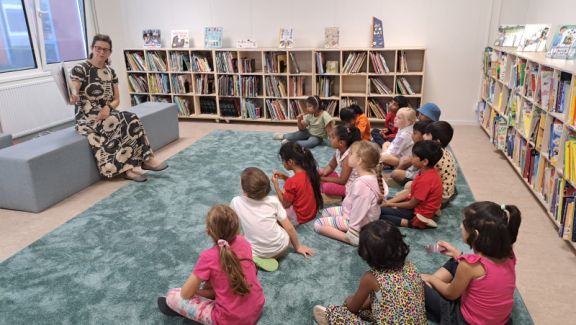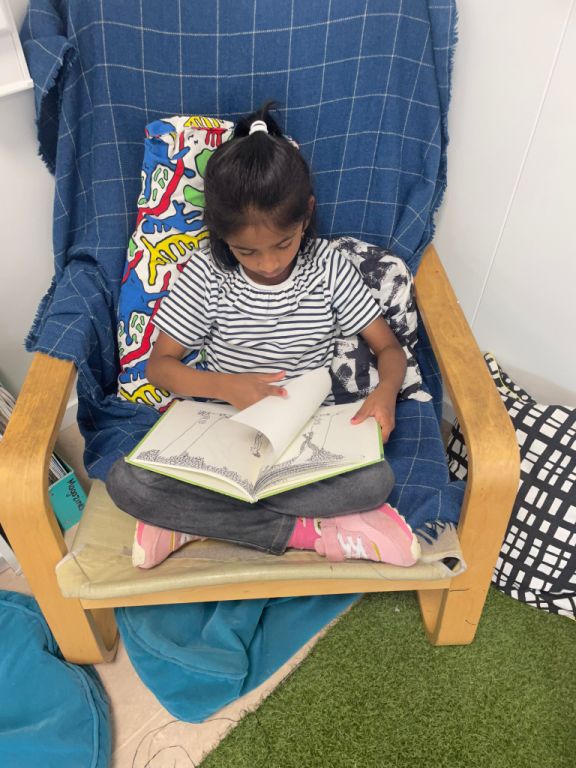Children’s reading skills actually begin with their listening skills. Did you know when you read a book to your child you are improving their reading skills? They are picking up on literature structures, learning how to comprehend ideas and hearing rich vocabulary just by listening. In the early years, this looks like our daily read alouds where students make connections and inquire into new words that supports them in their reading journeys.
Syllable robots
Did you know that vital beginning reading skills don’t even involve letters? In the early years, students begin to develop their phonemic awareness which is the ability to identify and manipulate individual sounds in spoken words. This looks like students being able to identifying rhymes, beginning and ending sounds, and syllables. This sounds like students noticing rhymes in songs and stories heard in class and pretending to be syllable robots. This is when students speak like robots to help separate words into syllables.


Letter inquiries
Along with listening comprehension and manipulating sounds, students must begin to make connections between sounds and letters. This is called phonics. Students learn that letters and groups of letters all have corresponding sounds and when blended together create words. In our classrooms, this looks like letter inquiries, authentic experiences with letters such as connecting to the words in their environment and the sounds attached and small group instruction. Our small group instruction is differentiated to the needs of the students meaning that one group may be working on something different than another group based on their reading needs.
Reading is like a tree
Phonemic awareness and phonics combined is how children learn to read. In grade 1 we have started the year by assessing where each student stands in their phonemic awareness and phonics skills. In understanding where a student’s reading abilities lie, we are able to reach each student exactly where they need to be met. This then looks like differentiated learning instruction in small groups and independent reading routines that work on targeted skills and knowledge. While the teacher works with a group, the students independently work in stations such as read to self, read to others, word work or listening to stories.
So, what is reading? Let’s try to visual reading as a tree. The roots would be listening comprehension and phonemic awareness deep in the ground unseen. The trunk would be all the letters with words and sentences as the branches and leaves. Without a strong trunk, the tree couldn’t hold the branches and without strong roots, the tree couldn’t stand. So even if you can’t see the roots, it doesn’t mean they aren’t extremely important to the growth of the tree.
